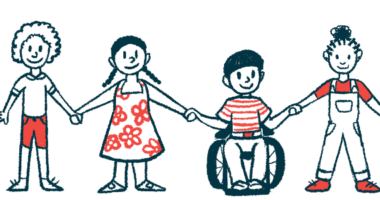Temporomandibular disorders highly prevalent in cEDS, hEDS
223 EDS, HSD patients completed a digital questionnaire in Sweden

Temporomandibular disorders, or conditions that affect the jaw joint and muscles, are highly prevalent among people with classical Ehlers-Danlos syndrome (cEDS), hypermobile EDS (hEDS) and hypermobility spectrum disorders in Sweden, a study reports.
While conservative treatments resulted in positive outcomes, more than half the patients who were asked said there was a lack of knowledge about EDS among dentists.
“Education about EDS and its manifestation among dental staff is compulsory in Sweden,” the researchers wrote in “Treatments related to temporomandibular disorders among patients with prevalent types of Ehlers-Danlos syndrome in Sweden,” which was published in CRANIO: The Journal of Craniomandibular & Sleep Practice.
EDS is a group of inherited disorders that affect the connective tissues, which provide structure to joints, skin, blood vessels, and other tissues and organs. Similar conditions with joint hypermobility that don’t meet the EDS diagnostic criteria are called hypermobility spectrum disorders (HSD). hEDS is the most common EDS type, followed by cEDS.
People with EDS are at risk for temporomandibular disorders (TMD) due to joint hypermobility. The temporomandibular joints connect the lower jawbone to the skull, sliding and rotating in front of each ear. They are essential for talking, chewing, and swallowing, but the prevalence of TMD along with treatment strategies for EDS are poorly known, leading scientists at Umeå University, Sweden to assess the treatment modalities and outcomes of patients registered in the National EDS Association in Sweden. A total of 223 patients (mean age, 49; 95% women) with a confirmed diagnosis of EDS or HSD completed a digital questionnaire between January to March 2022. Anxiety and depression were also analyzed.
Symptoms and treatments with TMD
Most (91%) reported poor general health and 42% poor oral health. Overweight and obese patients represented 55% of the participants. Autistic disorders were reported by 16%, and anxiety and depression by 70%.
TMD symptoms, including pain in the temple, face, temporomandibular joints or jaw once a week or more were reported by 84% of cEDS and 82% of hEDS/HSD patients. Also, 90% of cEDS and 95% of hEDS/HSD patients reported pain, stiffness, or fatigue in the jaws when they woke up.
Symptoms of luxation, clicking, or crepitation, meaning dysfunction, were reported by 89% of those with hEDS/HSD and 97% with cEDS. Also, 45% of hEDS/HSD and 39% of cEDS patients reported uncomfortable occlusion, that is, how the upper and the lower teeth make contact.
Among hEDS/HSD patients, 12% reported the worst pain was in the head, neck and lower back, followed by the hip (11%). cEDS patients also reported the lower back (19%) and the belly, chest and neck (10%) among the places of worse pain.
Most cEDS patients (81%) along with 66% of those with HSD/hEDS requested treatment from dentists, including dental specialists. However, more than half (64% of cEDS, 67% of HSD/hEDS) felt the dental staff had limited knowledge about EDS and couldn’t provide good dental care.
The most common treatments included bite splint therapy, counseling, jaw exercises, occlusal adjustment to improve tooth contact patterns, or orthodontic treatment. Botox injections were administered to 3% of the HSD/hEDS group and 16% of those with cEDS.
Overall, 57% of the HSD/hEDS and 61% of the cEDS groups reported good outcomes from the treatments they received. The findings point to the need for more research “to assure the best possible treatment options among EDS,” the researchers said.







